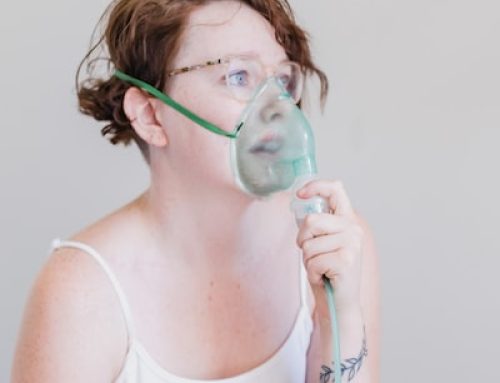The pandemic within the pandemic
As COVID-19 cases increased around the United States toward the end of March 2020, governmental regulations issued stay-at-home orders, school closures, and caused many individuals to be laid off, furloughed, or to work from their homes. Although stay-at-home orders were intended to reduce the spread of COVID-19 and keep our communities safe from contracting COVID-19, home is not always a safe place for individuals to live, especially for adults and children who reside in homes where domestic and familial violence occurs. For these individuals, home environments are often a place where power and control predominate, and where significant others who perpetrate violence or abuse, can assert their power without intervening with others outside of the family unit. COVID-19 restrictions on movement and outside activity reduced access to escape, help-seeking behaviors, and mechanisms to cope for victim-survivors. Additionally, social norms and attitudes, with respect to family life and connectedness during the pandemic, likely contribute to increased challenges for victim-survivors to seek help, speak out, and/or leave due to increased feelings of shame, guilt, and embarrassment. As the pandemic and its restrictions continue, it is important to understand that positive conceptions of home and family life can contribute to increased marginalization and silence for individuals that live and have connections to a home life that is unsafe and may be fraught with violence.
So, how can we help deal with Domestic Violence?
What Friends, Family, and Significant Others can do to curb Domestic Violence:
Friends, family, and significant others can support others who are struggling with domestic violence by having conversations with victim-survivors. Though these conversations may be difficult, several tips can help support victim-survivors.
- Acknowledge the situation is difficult and scary, and the violence or abuse is not their fault.
- Let the person or family know that they are not alone and that there is help and support available to them.
- Listen and be supportive. Telling victim-survivors what they should do or should not do will likely lead to further isolation and disempowerment. It is important that friends of victim-survivors make known that they support the individuals and their decisions.
- Don’t be judgmental or harsh. Individuals have many reasons for why they stay in violent or abusive situations and/or leave and return to these situations. Perpetuating further shame or guilt to these individuals not only contributes to the shame and guilt they likely already feel, but can contribute to increased sensations of loneliness, isolation, and helplessness that their abusive situations already cause.
- As much as we may want to “rescue” a person or family from violence, the only person that can save the person is themselves. Abuse and violence are about power and control, and we must do everything to empower these individuals to make helpful decisions for themselves.
- Develop and collaborate on a safety plan with a person or family struggling with violence or abuse. A safety plan is an individualized, practical plan that can improve the person or family’s safety while experiencing an unsafe or abusive situation. This can be helping the person or family cope while remaining in the home, preparing the person or family to leave, or helping problem-solve after they leave. Safety plans include strategies to remain physically safe, emotionally safe, and sometimes involved with legal protections.
- Help the person or family identify and build support from other family members, professionals, or people to increase the person or family’s recognition and access to safe people or places.
- Suggest, identify, and collaborate with the person or family to find a local service provider, supportive professionals, or referral to a mental health care provider.
What Medical and Mental Health Professionals Do to Treat Domestic Violence:
- Professionals should attend to and screen every patient for domestic violence at the beginning of visits while ensuring patient privacy by screening patients without the patient’s partner or children present, if possible.
- Patient confidentiality should be reassured and sensitivities must be given to confirm if the patient can and has access to a private and safe place to talk.
- Alternative methods of communication may need to be provided, and if possible, professionals should know how to provide comprehensive screening with yes/no questions. When applicable, professionals should provide nonverbal communication tools.
- Referrals should be provided for patients who screen positive for intimate personal violence or domestic violence within their communities. Referrals to community resources can reduce psychological harm from IPV and offer support to victim-survivors. Additionally, barriers of access to resources provided should be assessed and problem-solving should be included to allow patients the opportunity to utilize the resources given.
Medical and Mental Health Professionals can search for local shelters at https://www.domesticshelters.org, search for resources by the state at https://www.womenshealth.gov/relationships-and-safety/get-help/state-resources, and find resources to use during the COVID-19 pandemic at https://www.futureswithoutviolence.org/get-updates-information-covid-19/.
If you need immediate help or need a discreet way to reach out for help regarding domestic violence, please visit The Domestic Violence Hotline and call 800.799.SAFE (7233).
If you or someone you know is struggling with domestic violence or interpersonal violence, the trauma program at Specialized Therapy Associates can help. STA offers individual and group counseling by experienced, highly trained therapists to help individuals process trauma, reduce isolation and shame, and promote healing.
References:
- Bradbury-Jones, C., & Isham, L. (2020). The pandemic paradox: The consequences of COVID-19 on domestic violence. Journal of clinical nursing, 29(13-14), 2047–2049. https://doi.org/10.1111/jocn.15296
- Evans, M. L., Lindauer, M., & Farrell, M. E. (2020). A Pandemic within a Pandemic — Intimate Partner Violence during Covid-19.N Engl J Med, 383(24), 2302-2304. https://doi.org/1056/NEJMp2024046
- Moreira, D. N., & Pinto da Costa, M. (2020). The impact of the Covid-19 pandemic in the precipitation of intimate partner violence. International journal of law and psychiatry, 71, 101606. https://doi.org/10.1016/j.ijlp.2020.101606
- Naional Domestic Violence Hotline . (2021, January 4). Talking About Relationship Abuse. https://www.thehotline.org/resources/talking-about-relationship-abuse/.
- Smith SG, Zhang X, Basile KC, et al.; Centers for Disease Control and Prevention; National Center for Injury Prevention and Control. National Intimate Partner and Sexual Violence Survey: 2015 data brief – updated release. November 2018. Accessed June 30, 2020.
- Ver, C., Garcia, C., & Bickett, A. (2021, January 1). Intimate partner violence during the covid-19 pandemic. https://www.aafp.org/afp/2021/0101/p6.html.






